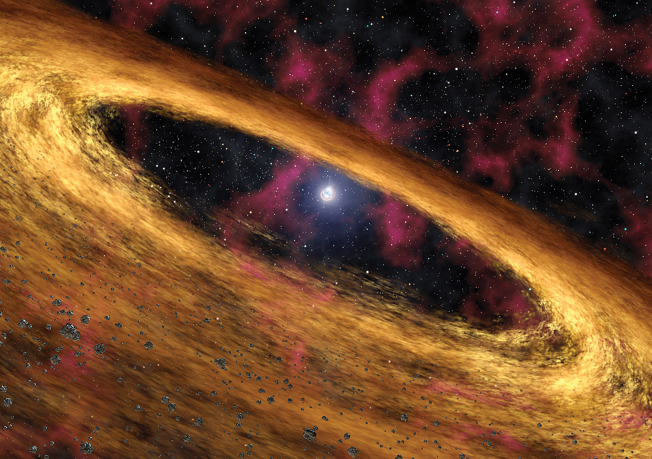
脉冲星的SOHO探测法
<a href="../201812/t20181229_903800.html">2017年的日全食激发了大众的科学热情</a>(科学60S)
0:00/0:00
最新发布时间:
2014-12-06
Home PCs Help Pinpoint Pulsars
脉冲星的SOHO探测法
The distributed computing project Einstein@Home uses home computers to search through years of telescope data to find pulsars.
一项名为“家里的爱因斯坦”的计算机项目将工作分派给网友,邀请他们使用自己的电脑,在这些年来的天文观测数据中搜寻脉冲星的踪迹。
撰文/播音 约翰•马特森(John Matson)
翻译 李轩
It’s pretty rare to find a scientific study that acknowledges key contributions from individuals who go by names like “IG_the_cheetah” and “Revoluzzer.” But Ig and Rev were big helps in finding previously unknown pulsars in our own Milky Way galaxy—24 of them. The discovery is in the Astrophysical Journal. [Benjamin Knispel et al., Einstein@Home Discovery of 24 Pulsars in the Parkes Multi-beam Pulsar Survey]
一般来说,能对科学做出重要贡献的人,名字都不会太二不挂五。但是,“IG_the_cheetah”和“Revoluzzer”这俩哥们儿,确实为发现银河系中的24个新的脉冲星贡献了不少力量。与之相关研究发表在了《天体物理学杂志》上。
A pulsar is the rapidly rotating ultra-dense remnant of a collapsed massive star. Imagine the mass of the sun, compressed to the diameter of a medium-size city, spinning faster than a DVD.
脉冲星是大质量恒星塌缩后的遗物,以飞快的速度自转,并且密度极大。觉得这描述不够形象?我们可以拿太阳打个比方,只不过太阳的直径被压缩到了一座中型的城市那么大,并且比DVD转得还要快。
The new pulsars were found by the distributed computing project Einstein@Home. It uses idle computing time on the PCs of thousands of volunteer users—like Ig and Rev—to scan telescope data for pulsar signals. In this case the data were more than a decade old, but still contained a few hidden gems—such as the pulsars that have now been unearthed, if you will, for astronomers to study in greater detail.
前文提到的新脉冲星,就是“家里的爱因斯坦””这个分派给网友的研究项目发现的。包括IG和Rev在内的上千名志愿者的个人电脑,利用闲暇时间扫描分析了脉冲信号的天文观测数据。这些观测数据虽都来自十多年之前,但其中依然埋藏着尚待挖掘的宝藏——就像现在新发现的脉冲星一样。如果你肯贡献一份力量,天文学家就能更细致地研究这些信息。
You too can lend your spare computer power to the pulsar hunt. Einstein@Home even runs on Android devices. So your smartphone could help make us all smarter.
利用休息时间,你的电脑也可以参与进这场脉冲星大搜寻之中。“家里的爱因斯坦”甚至能在安卓设备上运行,你的智能手机也能“智能化”更多的人!
查看更多
©2011- 版权所有:中国数字科技馆
未经书面许可任何人不得复制或镜像
京ICP备11000850号-1 京公网安备11010502039775号
京公网安备11010502039775号
信息网络传播视听节目许可证0111611号
国家科技基础条件平台
未经书面许可任何人不得复制或镜像
京ICP备11000850号-1
 京公网安备11010502039775号
京公网安备11010502039775号 信息网络传播视听节目许可证0111611号
国家科技基础条件平台

















